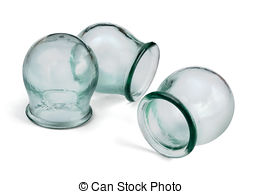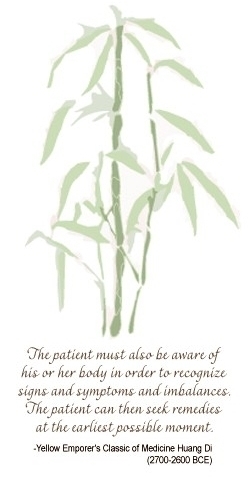There has been a lot of talk about cupping since the onset of the 2016 Olympics in Rio. The Olympic superstar, Michael Phelps, made his arrival poolside with large curious circles all over his shoulders and back. The media jumped on this opportunity for publicity and their first reaction was to say that this ancient technique has not been scientifically proven. We will not get into the science of evidence based medicine, but the Chinese have been recording results of this mysterious medicine for over 2000 years. One must not discount that which has stood the test of time.
After 5 gold, and one silver medal at the 2016 Olympics, one can safely say that cupping certainly did not hurt the 31 year old superstar. We could be optimistic and say that Phelps performance at the 2016 Olympics was improved with cupping.
BUT WHAT IS CUPPING?
There are a few variations of cupping, but the traditional form of fire cupping that we saw evidence on Phelps back, has been around for over 2000 years. Cupping is a technique that has been used in several ancient cultures including Asia, and the Middle East. Actually, it is uncertain exactly how long cupping has been around because the original instruments used for cupping were biodegradable. It is believed that the original form of cupping was done with bamboo.
Today practitioners use glass or silicone cups to create suction on the body. With the glass cups, suction is created by placing a heat source (fire) under the cup before applying it to the body. Silicone cups have a pump to remove the air from the inside of the cup. Stationary cups are applied to specific acupuncture points, which are used for muscle or tendon strain. These points usually coincide with the muscle belly or tendinous attachments of injured muscles. The acupuncture points that are chosen are usually powerful points for moving Qi and Blood, and promote circulation in the body. The cups are retained for up to 20 minutes.
Other styles of cupping include flash cupping, and sliding cupping. In flash cupping, the cups are quickly applied and removed over a variety of locations on the body. During sliding cupping, a sliding agent (oil or linament) is used on the skin, and the cups glide along the meridian lines. The cups have less tension in this method. More recently cupping has also been adapted in cosmetic treatments.
AND WHAT IS CUPPING ACTUALLY DOING?
Now that you know the procedure, we can discuss the application of cupping.
- CIRCULATION: Through the action of suction, cupping is drawing blood toward the surface of the body. The lymphatic system is the system that cleans the blood, and is located close to the surface of the skin. Cupping can help to flush the lymphatic system, which is why it is effective for detoxification; therefore, cupping is often used for patients with a cold or immune system illnesses. The cups are breaking small capillaries during the act of suction, increasing blood circulation to the local area, and sometimes leaving dark marks. Any area that has more blood circulation will naturally function better.
- MUSCULO/TENDINOUS ISSUES: In order to function correctly, a muscle must have a healthy stretch reflex, and be able to contract and relax freely. Through the simple act of suction, the cups are helping to encourage the stretch reflex of the muscles. When the body builds muscle, it creates micro tears in the muscles, and if it is too extreme it will cause inflammation and increased tearing in the muscle. The body is equipped to deal with micro tears, but when this phenomenon recurs too frequently the muscle cannot manage the inflammatory response. The muscle becomes stiff and sticky from the chronic inflammation, and heat created from the injury. By drawing blood and lymph to the area, the body can clean up the area and get on with the healing process. During a muscle injury, the body creates an inflammatory response and ‘shunts’ the area, thereby cutting off the blood supply. This is an important part of the healing process for the first 24-36 hours, but with repeated injury this shunting can continue and actually restrict proper circulation to the area.
- SCAR TISSUE: When the body builds muscle/tears muscle, the new tissue that forms is collagen fiber. This collagen has less stretch than regular muscle fiber, and when it forms, the fibers can be uneven. With a buildup of scar tissue, the muscle does not contract and relax as effectively. Using cupping technique on scar tissue can help to even out the collagen fibers as well as increase blood circulation to the area, thereby improving muscle function.
- FASCIA: Fascia is a web of connective tissue that encapsulates the entire body. Different areas of the body are enveloped by different fascial chains, and when the body goes out of alignment, the fascia of that area can be affected. Cupping therapy helps to release congested areas of fascia, thereby allowing the body to return to balance.
IS CUPPING RIGHT FOR ME?
It is very likely that cupping would be a helpful therapy for you. Most often, cupping is used to release muscular tension on the body, and immune related conditions. Cupping is an incredible form of therapy, but there are some cautions that we need to consider. Generally speaking, we tend to avoid doing cupping on pregnant women, as well as people who have bleeding disorders. Cupping can cause a strong reaction in persons who have a weaker system, have a chronic illness, or very low blood pressure. It is usually best to receive cupping from a qualified health professional. A practitioner of Traditional Chinese Medicine and Acupuncture, or a practitioner who has done a thorough training in the modality, and really understands the risks and benefits of cupping would be recommended.
Lisa Dowling first studied cupping in 2000, and later completed her studies in Acupuncture in 2007. She is a Registered Acupuncturist with the College of Traditional Chinese Medicine Practitioners Association of Ontario. Lisa teaches and supervises the student acupuncture clinic at the Shiatsu School of Canada, as well as teaches her own continuing education classes in Toronto and abroad.
If you would like more information, or would like to set up a free 15 minute consultation, either by phone or in person please contact Lisa Dowling at Life Acupuncture Bodywork www.lifeacupuncturebodywork.com 416-986-3429 lifeacupuncturebodywork@gmail.com






Hello Lisa,
I just saw that you are giving a course of cupping in Montreal April 1st. Is it possible to know the location and price?
Thank you very much